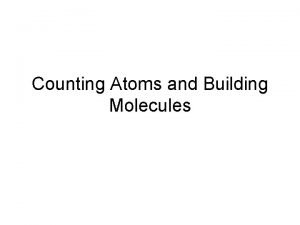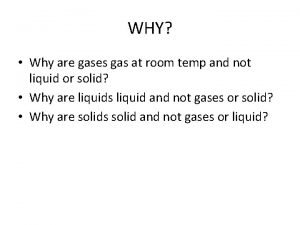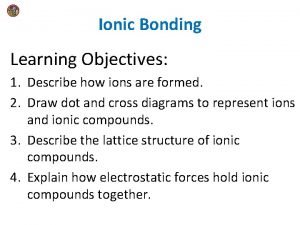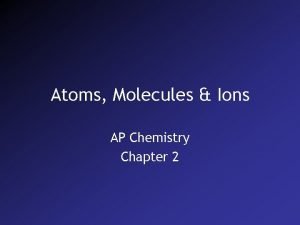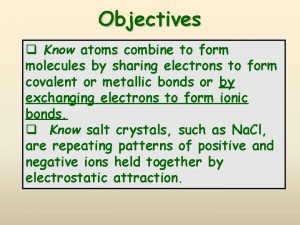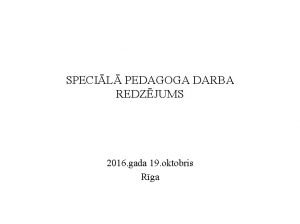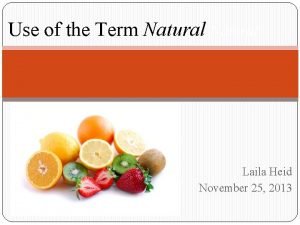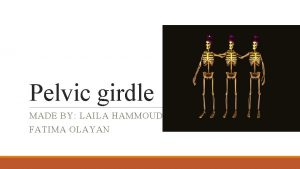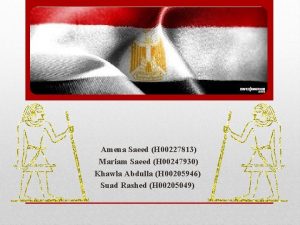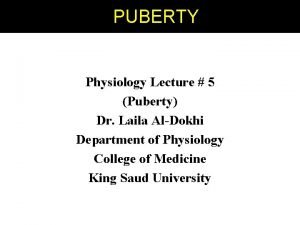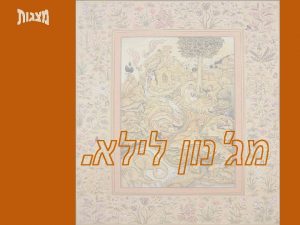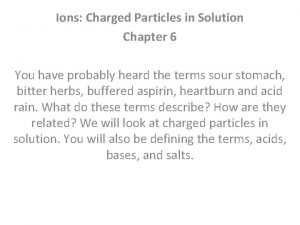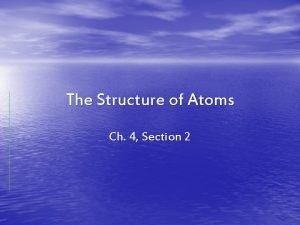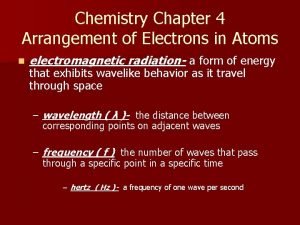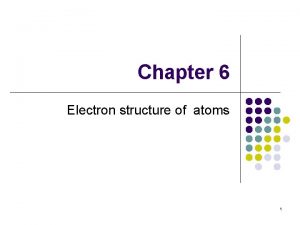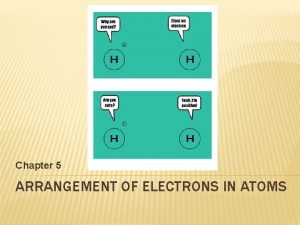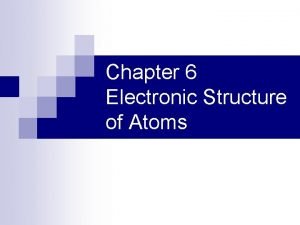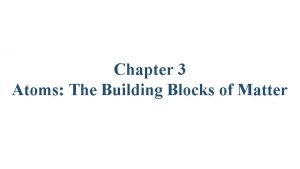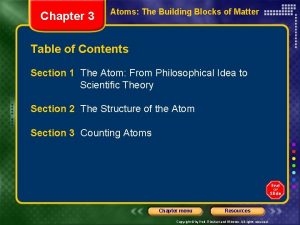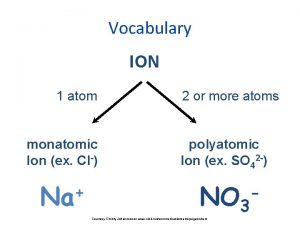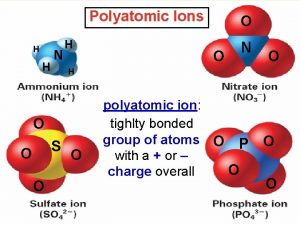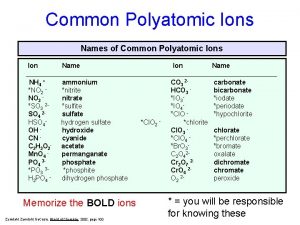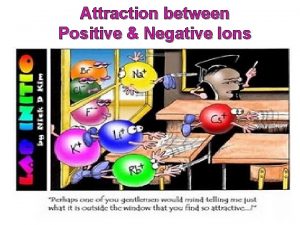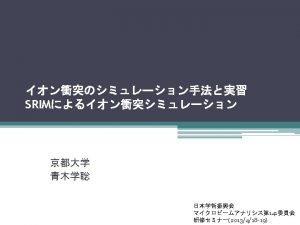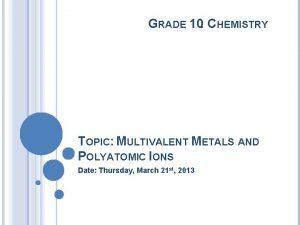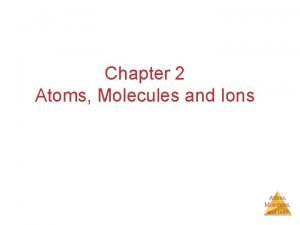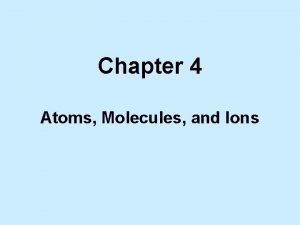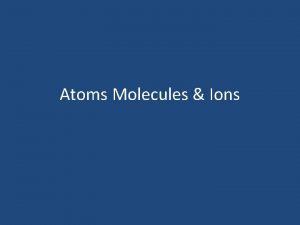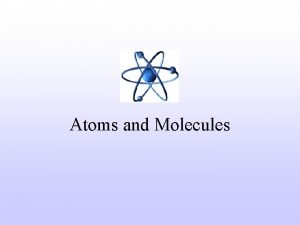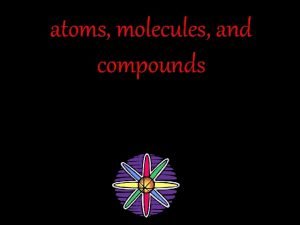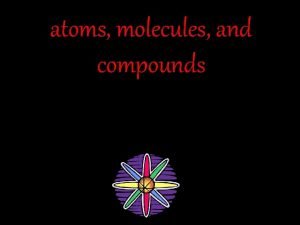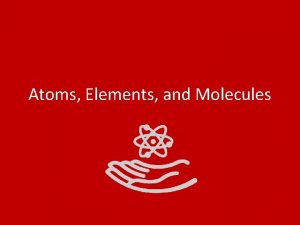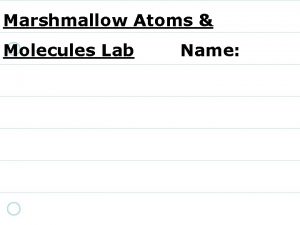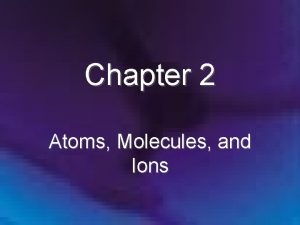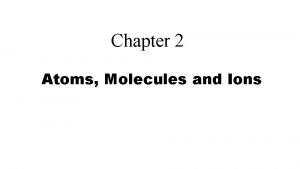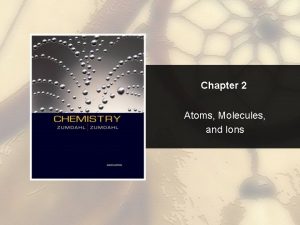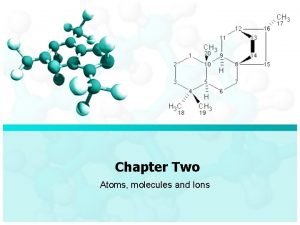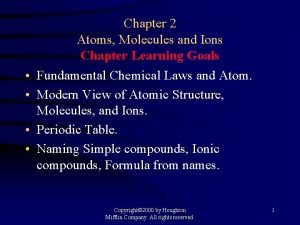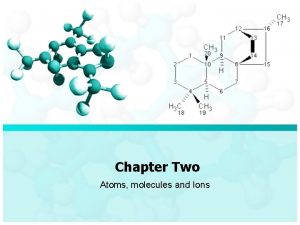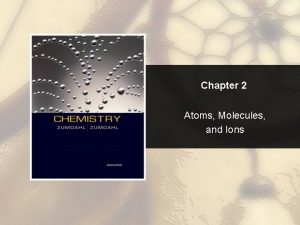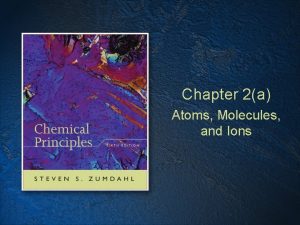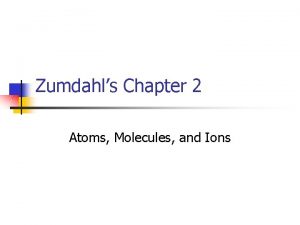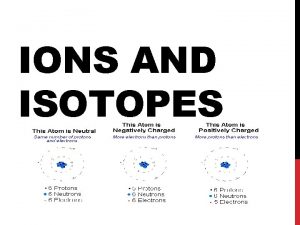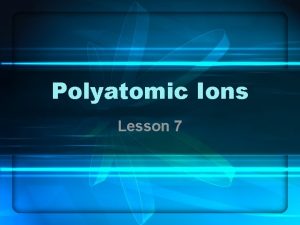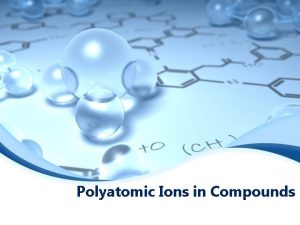Atoms Molecules and ions Chapter 2 Dr LAILA















![Main-group elements [1 A to 8 A] Dr. LAILA AL-HARBI Noble Gas Period Halogen Main-group elements [1 A to 8 A] Dr. LAILA AL-HARBI Noble Gas Period Halogen](https://slidetodoc.com/presentation_image/8bf70411543989755626aa6433099d2a/image-16.jpg)































- Slides: 47

Atoms. Molecules, and ions Chapter 2 Dr. LAILA AL-HARBI

Chapter 2 Atoms. Molecules, and ions � � v v v Ø v v 2. 3 atomic number, mass number, and isotopes 2. 4 the periodic table 2. 5 molecules and ions 2. 6 chemical formulas Molecular formula Molecular models Ionic formulas 2. 7 naming compounds Ionic compounds Molecular compounds Dr. LAILA AL-HARBI

Objectives � By the end of this chapter you should: � Know atomic number, mass number, and isotopes � Be able to distinguish between molecules (diatomic & polyatomic ) and ions ( cation & anions). � Know different Chemical formulas � Know how to Name Ionic & covalent compounds Dr. LAILA AL-HARBI

2. 3 atomic number, mass number, and isotopes Protons and electrons are the only particles that have a charge. � Protons and neutrons have essentially the same mass. � The mass of an electron is so small we ignore it. � � Atomic number (Z) = number of protons in nucleus) � Mass number (A) = number of protons + number of neutrons � = atomic number (Z) + number of neutrons Note that th № of P= № of e- Dr. LAILA AL-HARBI

Symbols of Elements Mass Number A Atomic Number Z X Element Symbol � Symbols of Elements All atoms of the same element have the same number of protons: The atomic number (Z) � The mass of an atom in atomic mass units (amu) is the total number of protons and neutrons in the atom. Dr. LAILA AL-HARBI

Isotopes � Isotopes are atoms of the same element with different masses. � Isotopes have different numbers of neutrons. Hydrogen 1 1 2 1 H 235 92 Deuterium 3 1 H (D) U 238 92 Tritium H (T) U Chemically, isotopes are not very different from each other. Dr. LAILA AL-HARBI

Isotopes � Dr. LAILA AL-HARBI

Example 2. 1 � Give the number of protons, neutrons and electrons in each of the following species � 20 11 Na 22 11 Na 17 8 O 22 20 11 Na 17 8 14 6 C O 14 6 C Mass Number 20 22 17 14 Atomic Number 11 11 8 6 Number of electrons 11 11 8 6 Number of protons 11 11 8 6 Number of neutrons 20 -11 = 9 22 -11=11 17 -8=9 14 -6=8 Dr. LAILA AL-HARBI

�The nucleus of an atom a. b. c. d. contains: protons and neutrons. protons and electrons and neutrons. air. �Atoms with identical a. b. c. d. atomic numbers but different mass numbers are called: mutants. isomers. Isotopes. symbiots. Dr. LAILA AL-HARBI

Example 7 � Consider the following nuclei: � 14 C; 14 N; 12 C; 13 N � Which are isotopes? Isotones? Isobars? � 14 C and 12 C are isotopes of C � 13 N and 14 N are isotopes of N � 14 C and 14 N are isobars (A =14) � 12 C and 13 N are isotones (N = 6). Dr. LAILA AL-HARBI

An ion is an atom, or group of atoms, that has a net positive or negative charge. cation – ion with a positive charge If a neutral atom loses one or more electrons it becomes a cation. Na 11 protons 11 electrons Na+ 11 protons 10 electrons anion – ion with a negative charge If a neutral atom gains one or more electrons it becomes an anion. Cl 17 protons 17 electrons Cl. Dr. LAILA AL-HARBI 17 protons 18 electrons

A magnesium ion, 12 Mg 2+, has A. 12 protons and 13 electrons. B. 24 protons and 26 electrons. C. 12 protons and 10 electrons. D. 24 protons and 22 electrons. E. 12 protons and 14 electrons. A sulfide ion, 16 S 2 - , has: A. 16 protons and 16 electrons B. 32 protons and 16 electrons C. 16 protons and 14 electrons D. 16 protons and 18 electrons E. 32 protons and 18 electrons Dr. LAILA AL-HARBI

How many protons and electrons are in 13 protons, 10 (13 – 3) electrons How many protons and electrons are in 34 protons, 36 (34 + 2) electrons Dr. LAILA AL-HARBI

Use the following table and choose which of the species are neutral? Atom or ion element I II IV V VI Atom or ion electrons (e) 6 10 18 10 28 7 Atom or ion protons (p) 6 8 17 11 30 7 Atom or ion neutrons (n) 6 8 18 11 36 6 A. III and V B. IV and V C. II and III D. I and VI Use the following table and choose which of the species are charged? negatively Atom or ion element I II IV V VI Atom or ion electrons (e) 6 10 18 10 28 7 Atom or ion protons (p) 6 8 17 11 30 7 Atom or ion neutrons (n) 6 8 18 11 36 6 A. III and V B. IV and V Atoms with the C. II and III D. I and VI same number of electrons and number of protons are called… A. Ions C. neutral atoms B. isotopes D. different atoms Dr. LAILA AL-HARBI

Periodic Table � � Elements arranged in order of increasing atomic number. Horizontal Rows in periodic table are called periods. Vertical Columns are groups or families; elements have similar properties. representative elements: A Group; transition elements: B Group These five groups are known by their names Dr. LAILA AL-HARBI
![Maingroup elements 1 A to 8 A Dr LAILA ALHARBI Noble Gas Period Halogen Main-group elements [1 A to 8 A] Dr. LAILA AL-HARBI Noble Gas Period Halogen](https://slidetodoc.com/presentation_image/8bf70411543989755626aa6433099d2a/image-16.jpg)
Main-group elements [1 A to 8 A] Dr. LAILA AL-HARBI Noble Gas Period Halogen Group Alkali Earth Metal Alkali Metal Transition metals

Nonmetals are on the right side of the periodic table (with the exception of H) (blue). Metalloids border the stair-step line (with the exception of Al, Po, and At). Metals are on the left side of the chart (green color) Dr. LAILA AL-HARBI

� Positive ions are called: a. b. c. d. positrons. anions. cations. nucleons. � The elements located in a. b. c. d. group 7 A of the periodic table are called: alkali metals. noble gases. chalcogens. halogens. What are the ions present in the compound (NH 4)2 SO 4 ? � NH 3, H 2, and SO 2 � N 3–, H+, S 2–, O 2– � NH 42+ and SO 4– � NH 4+ and SO 42– (3 IONS) � (NH 4+)2 and SO 42– Dr. LAILA AL-HARBI

1 - Selenium (34 Se) element is: (a) a nonmetal (b) found in group 6 A (c) both a and b 2 - Gallium (Ga) element is found in the periodic table in (a) period 3, group 1 B (b) period 3 A, group 4 (c) period 4, group 1 A (d) period 4, group 3 A 3 - Which of the following sets of elements is expected to have similar chemical properties? a) Sulfur and phosphorous b) Sulfur and oxygen c) Sulfur and argon 4 - Which of these elements is most likely to be a good conductor of electricity? Which of the following is metal? A. N B. S C. He D. Fe Dr. LAILA AL-HARBI

2. 5 Molecules and Ions A molecule: is an aggregate of two or more atoms in a definite arrangement held together by chemical forces, a molecule may contain atoms of the same element or atoms of two or more elements. H 2 O NH 3 CH 4 Dr. LAILA AL-HARBI 2. 5

2. 5 Molecules and Ions Molecule Diatomic molecule: contains only two atoms H 2, N 2, O 2, Br 2, HCl, CO Polyatomic molecule: contains more than two atoms O 3, H 2 O, NH 3, CH 4 Dr. LAILA AL-HARBI

An ion: is an atom or a group of atoms that has a net positive (+ve) or negative (-ve) Charge. Ion Cation: an ion with a +ve charge (lose electron/s) Monoatomic cation Na+, K+, Mg 2+ Polyatomic cation NH 4+ Anion: an ion with a -ve charge ( Gain electron/s) Monoatomic anion Polyatomic anion Cl-, Br-, S 2 - OH-, PO 43 - Dr. LAILA AL-HARBI

� Which of the following is an example of polyatomic cation? � A) Mg+2 � B) NH 4+1 � C)O-2 � D) SO 4 -2 � Which of the following is an example of monatomic anion? � A) Mg+2 � B) NH 4+1 � C)O-2 � D) SO 4 -2 Dr. LAILA AL-HARBI

2. 6 Chemical formulas � Molecular formulas give the actual numbers and types of atoms in a molecule. E. g. CH 4, H 2 O 2, C 2 H 4, C 6 H 12 O 6 � Empirical formulas give the smallest whole number ratio of atoms in a molecule. The empirical formula of many compounds is the same as the molecular formula E. g. CH 4, HO, CH 2 O � Ionic formulas: the number of electrons lost & gained must be equal, so + and -charge cancel out. Dr. LAILA AL-HARBI

An empirical formula shows the simplest whole-number ratio of the atoms in a substance molecular H 2 O C 6 H 12 O 6 empirical 1 H 2 O 6 3 CH 2 O C 2 H 6 O 2 O 3 3 O N 2 H 4 2 NH 2 Dr. LAILA AL-HARBI

EXAMPLE 2. 3 � Write the ü Empirical formulas for the following molecules Acetylene C 2 H 2 divided by 2 CH ü Glucose C 6 H 12 O 6 divided by 6 CH 2 O ü Nitrous oxide N 2 O , the Empirical formulas is same as molecular formula N 2 O ü Caffeine C 8 H 10 N 4 O 2 divided by 2 C 4 H 5 N 2 O Dr. LAILA AL-HARBI


Rules for writing ionic formula: � 1) Write down formulas of ions � 2) Combine the smallest number of ions to give the charge sum equal to 0; if the charges are not equal, find the lowest common multiple � E. g. Predict the formula for the compound formed from the following elements: � Potassium bromide K+ Cl– = KCl � Zinc iodide Zn+2 I– = Zn. I 2 � Aluminum oxide Al+3 O– 2 = Al 2 O 3 2 × +3 = +6 Al 3+ 3 × -2 = -6 Al 2 O 3 O 2 Dr. LAILA AL-HARBI

� Write the formula of magnesium nitride? � Write the formula of a)chromium sulfate , b)titanium oxide? 2 × +3 = +6 3 × +2 = +6 2 × -3 = -6 3 × -2 = -6 Cr 2(SO 4)3 Cr 3+ Mg 3 N 2 Mg 2+ Examples 2. 4 SO 42 - 2 × +4 = +8 N 3 - 4 × -2 = -8 Ti 2 O 4 Ti 4+ O 2 - Practice exercise 2. 4 Dr. LAILA AL-HARBI

2. 7 naming compounds v Ionic compounds v Molecular compounds � Ionic compounds consist of metals ( positive ions (cations) and negative ions (anions). A. Naming Cations 1. Fixed charge metals: Cations have same name as the metal element. (Groups 1 A, 2 A, 3 A , transition metals ) have specific charge. Ag+ silver ion Zn 2+ zinc ion , Al 3+ Aluminum ion Li+ lithium ion Ca 2+ calcium ion Dr. LAILA AL-HARBI

Naming Ionic compounds Metals Positive ion Cation Non metals Negative ion Anion ( 1 A , 2 A , 3 A & transition metals) Fixed charge metals Cations have same name as the metal element Ag+ silver ion , Zn 2+ zinc ion , Al 3+ Aluminum ion , Li+ lithium ion , Ca 2+ calcium ion monoatomic anions Variable charge metals (STOCK SYSTEM) If the metal can form more than 1 cation, the charge is indicated by a Roman numeral in parenthesis after the metal name. Polyatomic anions Fe 2+ iron(II) , Au+ gold(I), Cu+ copper(I) , Fe 3+ iron(III) Au 3+ gold(III) Cu 2+ copper (II) Hg 2 +2 mercury(I) Hg 2+ mercury (II) Dr. LAILA AL-HARBI

� 2. Variable charge metals: � If the metal has more than one oxidation state, the charge is indicated by a Roman numeral in parenthesis after the metal name. � Most of the transition metals are variable charge metals. � E. g. Common metals which exist in more than one positive state: � Fe 2+ iron(II) , Au+ gold(I), Cu+ copper(I) , Fe 3+ iron(III) Au 3+ gold(III) Cu 2+ copper (II) Hg 2 +2 mercury(I) Hg 2+ mercury (II) � 3. Polyatomic cations: consist of nonmetals: H 3 O+ hydronium ion NH 4+ ammonium Dr. LAILA AL-HARBI

Variable charge metals Dr. LAILA AL-HARBI

NOTE Some Cations of variable charge have name for each oxidation state � Example Fe 2+ iron(II) ferrous , Fe 3+ iron(III) ferric Cu+ copper(I) cuprous , Cu 2+ Copper (II) cupric Hg 2 +2 mercury(I) mercurous Hg 2+ mercury (II) mercuric � Mercury (Hg) is the only metal has this formula when it form cation with only one positive charge : Hg 22+ NOT Hg+ The cation of two positive charges has the formula Hg 2+ Dr. LAILA AL-HARBI

B. Naming Anions � 1. monoatomic anions: change ending to -ide � E. g. Oxygen→ Oxide Sulfur → Sulfide Hydrogen →Hydride chlorine → Chloride Florine → Floride Bromine → Bromide � Polyatomic anions: most end in -ate or -ite; usually contain O (oxy) � Know polyatomic anions on handout. � Carbonate CO 3 -2 , Nitrate NO 3 - , Sulfate SO 4 -2 , � Phosphate PO 4 -3 Cyanide CN- , Hydroxide OH- , Oxide O 2 -2 See table 2. 3 Dr. LAILA AL-HARBI

� Ionic compounds names start with the positive ion (metal) (include Roman numeral in parenthesis ONLY IF metal has variable charge) followed by the negative ion (nonmetal). � Na. Cl Sodium Chloride � Ba. Cl 2 Barium Chloride � K 2 O Potassium oxide � KNO 3 Potassium Nitrate � Na 2 CO 3 Sodium Carbonate � Fe. Cl 2 Iron(II) Chloride → ferrous Chloride � Fe. Cl 3 Iron(III) Chloride → ferric Chloride � Cr 2 S 3 Chromium(III) Sulfide � (NH 4)3 PO 4 Ammonium Phosphate � Cu(NO 3)2 Cupper(II)nitrate � Pb. O Lead(II) oxide Dr. LAILA AL-HARBI

Dr. LAILA AL-HARBI

� Write the chemical formula for the following compounds � Mercury(I)nitrite Hg 2 (NO 2)2 � Cesium sulfide Ce 2 S � Write the chemical formula for the following compounds � Rubidium sulfate � Rb 2 SO 4 � Barium hydride � Ba. H 2 Calcium phosphate Ø Ca 3 (PO 4)2 Ø Example 2. 6 PRACTIES EXERICISE 2. 6 Dr. LAILA AL-HARBI

Example 2. 5 p 61: Name the following compounds: (a) Cu(NO 3)2 1. Cation: Copper cation (can form two types of cation →Stock system) → Copper (II) 2. Anion: NO 3 - anion has a common name Nitrate ﻗﺎﻋﺪﺓ ﺗﺒﺎﺩﻝ ﺍﻟﺘﻜﺎﻓﺆﺎﺕ Thus: the name of the compound is: Copper (II) nitrate Dr. LAILA AL-HARBI

(b) KH 2 PO 4 1. Cation: K form only one type of cation → Potassium Note: not potassium (I) 2. Anion: H 2 PO 4 - has a common name dihydrogen phosphate Thus: the name of the compound is: Potasium dihydroen phosphate Dr. LAILA AL-HARBI

(c) NH 4 Cl. O 3 1. Cation: NH 4+ has a common name ammonium 2. Anion: Cl. O 3 - has a common name chlorate Thus: the name of the compound is: Ammonium chlorate H. W. Solve the practice exercise p 62 Dr. LAILA AL-HARBI

Example 2. 6 p 62: Write chemical formulas for the following compounds: (a) Mercury (I) nitrite Roman number (I) shows that mercury has +1 charge → Hg 22+ Nitrite is a common name of NO 2 Thus: the chemical formula is: Hg 2(NO 2)2 Dr. LAILA AL-HARBI

Molecular compounds • nonmetals or nonmetals + metalloids • common names �H 2 O water � NH 3 ammonia � CH 4 methane � H 2 S hydrogen sulfide � Si. H 4 silane � B 2 H 6 diborane � 1) Name 1 st element & use a prefix (table 2. 4) to indicate the number of atoms. � 2)Name 2 nd element & include prefix for number of atoms (see table 2. 4). � 3) Change ending of 2 nd element to –ide. Dr. LAILA AL-HARBI

Note � Note that mono- is never used for the first element � For oxides, the ending “a” in the prefix is omitted. � N 2 O 4 dinitrogen tetroxide not (dinitrogen tetraoxide) � For oxides, the ending “o” in the prefix is omitted. � N 2 O dinitrogen monoxide not (dinitrogen monooxide ) Dr. LAILA AL-HARBI

Molecular Compounds HI hydrogen iodide NF 3 nitrogen trifluoride Br 2 O 7 Dibromine heptoxide SO 2 sulfur dioxide N 2 Cl 4 dinitrogen tetrachloride NO 2 nitrogen dioxide N 2 O dinitrogen monoxide ICl 3 Iodine trifchloride Dr. LAILA AL-HARBI

� Iron (III) sulfide → Fe 2 S 3 � Tetrasulfur octoxide → S 4 O 8 � Silver dichromate → Ag 2 Cr 2 O 7 � Aluminum hydride → Al. H 3 � Sodium phosphide → Na 3 P Cobalt (III) nitrite → Co(NO 2)3 � Diphosphorus pentasulfide → P 2 S 5 � Sulfur hexafloride SF 6 Tin(IV) chloride → Sn. Cl 4 Chromium(III) thiocyanate → Cr(SCN)3 � Dinetrogen pentoxide P 2 O 5 � � � � Disulfur pentafluoride S 2 F 10 Lead(IV) oxide → Pb. O 2 Calcium phosphite →Ca 3(PO 3)2 Arsenic(V) sulfide → As 2 S 5 manganese(VII) oxide → Mn 2 O 7 IONIC COMPOUNDS MOLECULAR COMPOUND Dr. LAILA AL-HARBI

Which of these pairs of elements would be most likely to form an ionic compound? (a) P and Br (b) Cu and K (c) C and O (d) O and Zn (e) Al and Rb Which of these pairs of elements would be most likely to form a molecular compound? (a) Na and Br (b) C and O (c) Ca and O (d) Zn and O (e) Mg and Cl Dr. LAILA AL-HARBI
 Chapter 2 atoms molecules and ions
Chapter 2 atoms molecules and ions Ion chapter 11
Ion chapter 11 Atoms molecules and ions
Atoms molecules and ions Atoms molecules and ions
Atoms molecules and ions Atoms molecules and ions
Atoms molecules and ions Atoms ions and molecules
Atoms ions and molecules Atoms ions and molecules
Atoms ions and molecules Collision theory states that
Collision theory states that Carbon trichloride
Carbon trichloride Relationship between atoms and molecules
Relationship between atoms and molecules Study jams mixtures
Study jams mixtures How can you count atoms and molecules
How can you count atoms and molecules Interacting molecules or ions
Interacting molecules or ions Organic molecules vs inorganic molecules
Organic molecules vs inorganic molecules Positive ions are atoms that have
Positive ions are atoms that have Atoms or ions are considered isoelectronic if
Atoms or ions are considered isoelectronic if Atoms combine to form
Atoms combine to form Periodic table of elements regents
Periodic table of elements regents Laila henzele
Laila henzele Laila knio
Laila knio Laila hussein
Laila hussein Laila heid
Laila heid Where is the pelvic girdle located
Where is the pelvic girdle located Laila mourad
Laila mourad Laila medin
Laila medin Laila loste
Laila loste Puberty
Puberty Layla e majnun
Layla e majnun Chapter 6 section 1 atoms elements and compounds
Chapter 6 section 1 atoms elements and compounds Chapter 6 section 1 atoms elements and compounds
Chapter 6 section 1 atoms elements and compounds Chapter 13 ions in aqueous solutions
Chapter 13 ions in aqueous solutions Ions charged particles in solution
Ions charged particles in solution Chapter 3 molecules of life
Chapter 3 molecules of life Chapter 4 section 2 the structure of atoms
Chapter 4 section 2 the structure of atoms Chapter 4 arrangement of electrons in atoms test
Chapter 4 arrangement of electrons in atoms test Chapter 5 electrons in atoms
Chapter 5 electrons in atoms Chapter 6 electronic structure of atoms answers
Chapter 6 electronic structure of atoms answers Chapter 5 arrangement of electrons
Chapter 5 arrangement of electrons Energy quanta
Energy quanta Chapter 3 atoms the building blocks of matter
Chapter 3 atoms the building blocks of matter Which subatomic particle has the least mass
Which subatomic particle has the least mass Monatomic ion examples
Monatomic ion examples Polyatomic ions chart
Polyatomic ions chart Naming and writing formulas for monatomic ionic compounds
Naming and writing formulas for monatomic ionic compounds Polyatomic ions list with charges
Polyatomic ions list with charges What is the attraction between positive and negative ions
What is the attraction between positive and negative ions Srim the stopping and range of ions in matter
Srim the stopping and range of ions in matter Multivalent ion definition
Multivalent ion definition











